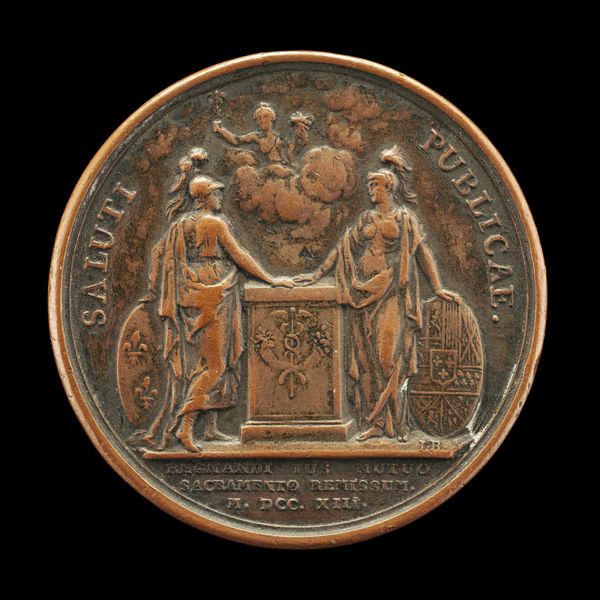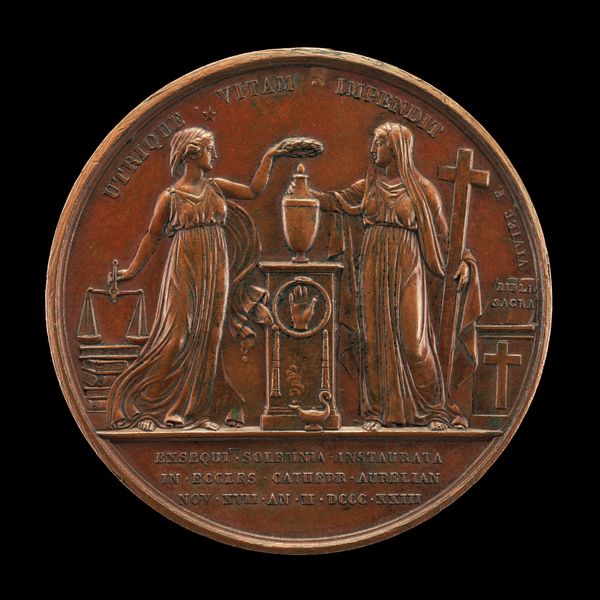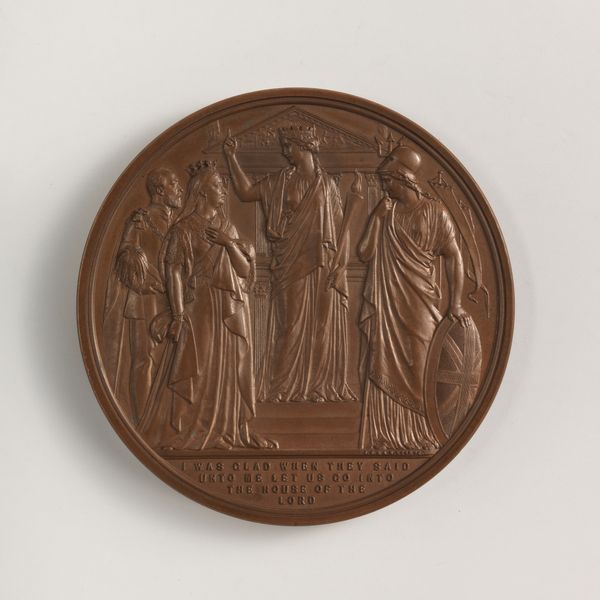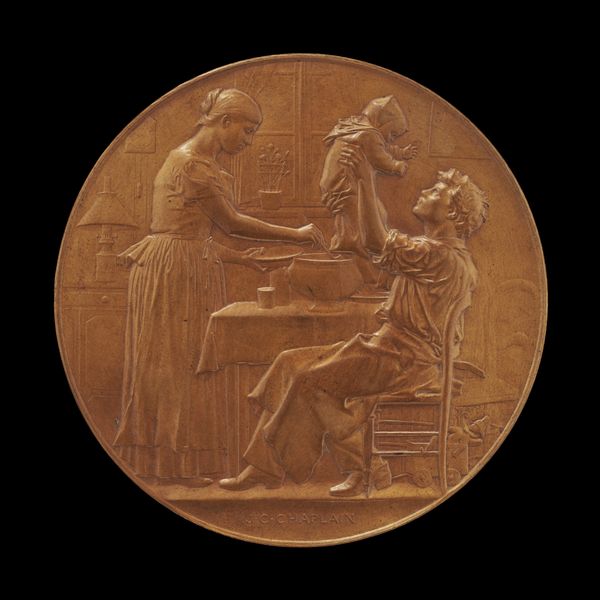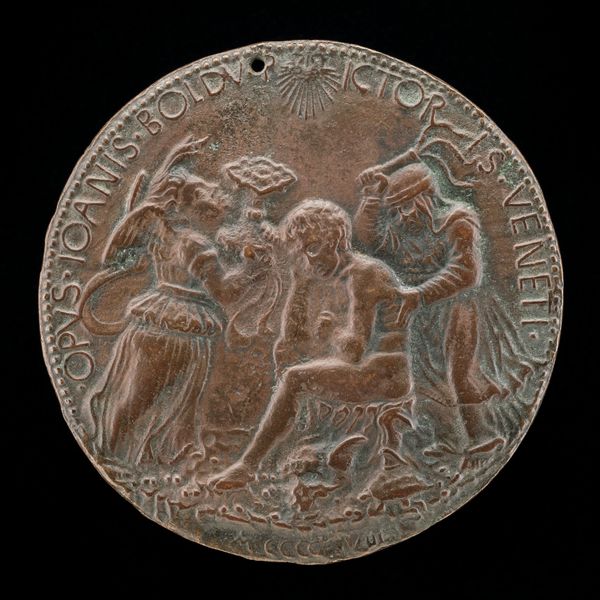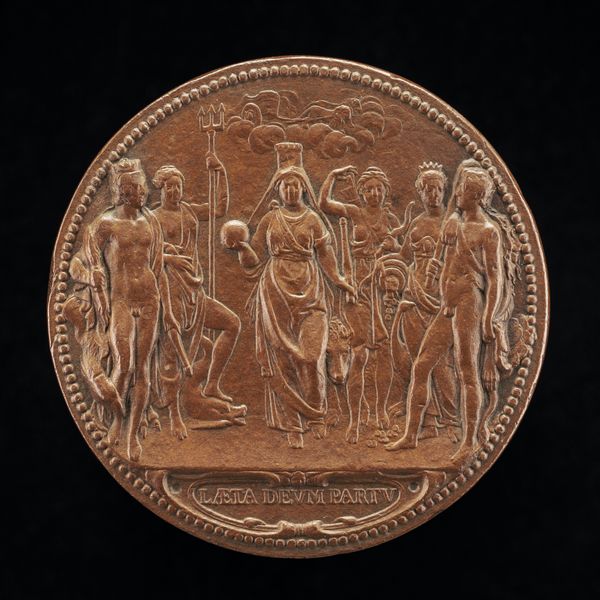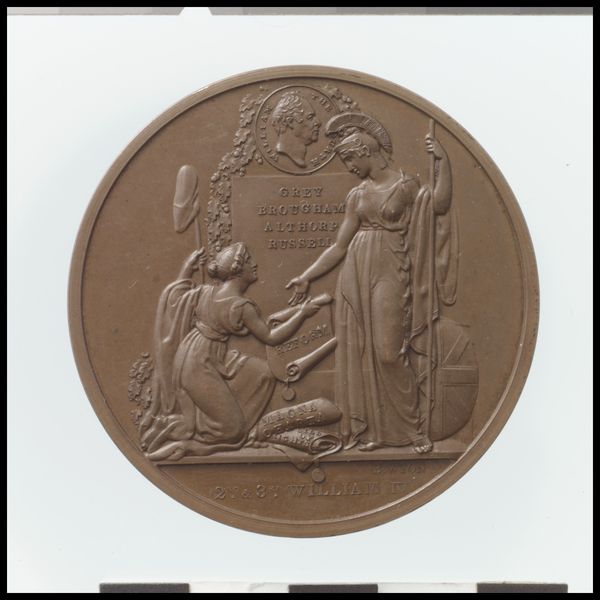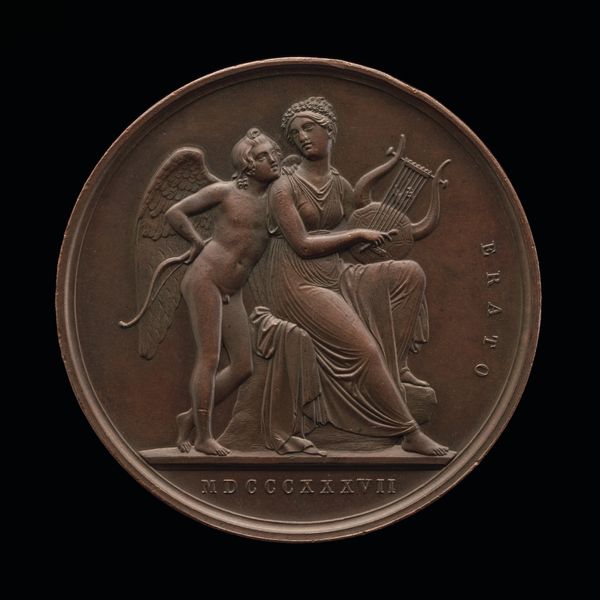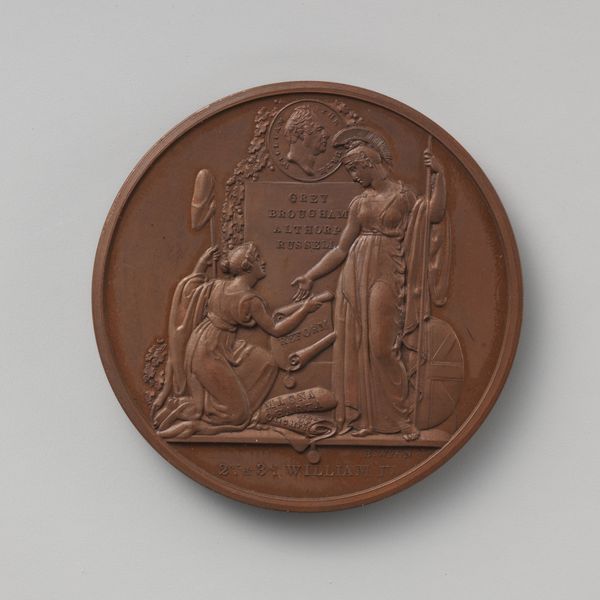![Canvassing for Votes (central scene from a painting by William Hogarth) [reverse] by Leonard Charles Wyon](/_next/image?url=https%3A%2F%2Fd2w8kbdekdi1gv.cloudfront.net%2FeyJidWNrZXQiOiAiYXJ0ZXJhLWltYWdlcy1idWNrZXQiLCAia2V5IjogImFydHdvcmtzL2NiNjAwYTg5LWQ1M2MtNGJkZC1iMmI3LWYwODZlNGUzMjQ2ZS9jYjYwMGE4OS1kNTNjLTRiZGQtYjJiNy1mMDg2ZTRlMzI0NmVfZnVsbC5qcGciLCAiZWRpdHMiOiB7InJlc2l6ZSI6IHsid2lkdGgiOiAxOTIwLCAiaGVpZ2h0IjogMTkyMCwgImZpdCI6ICJpbnNpZGUifX19&w=3840&q=75)
Canvassing for Votes (central scene from a painting by William Hogarth) [reverse] 1848
0:00
0:00
print, relief, bronze, sculpture, engraving
#
portrait
#
medal
# print
#
sculpture
#
relief
#
bronze
#
sculpture
#
history-painting
#
engraving
Dimensions: overall (diameter): 5.45 cm (2 1/8 in.)
Copyright: National Gallery of Art: CC0 1.0
Editor: Here we have a bronze medal created in 1848 by Leonard Charles Wyon, titled "Canvassing for Votes". It seems to depict a scene from a painting by William Hogarth. It looks like it is referencing 18th century London; the figures remind me of characters from a play. What do you make of it? Curator: Observe the carefully rendered composition. Three figures are clustered centrally within the circular format, their gestures drawing our eye inwards. Consider how the inscription, “He through the eye corrects the heart,” acts as both a frame and a commentary. What structural role does it play within the overall design? Editor: It kind of boxes them in. It looks less like it describes their actions and more like a sort of… pronouncement? It separates them from me. Curator: Precisely. It creates a closed system. Notice how the relief sculpture employs varying depths to create spatial recession. Hogarth was famously interested in moral subjects: is it fair to analyze the depicted scene – vote canvassing – in a similar fashion? Editor: That makes sense. If we think of Hogarth, then the eye and the heart may relate to vision and intent. I see that this is more than just a historical snapshot – it is like a symbol about social values. Curator: Yes, the artist presents to the viewer, through careful construction of line and form, an inquiry into perception, integrity, and power dynamics. The medal transcends simple representation, transforming into a discourse on societal structure itself. Editor: So even without knowing the specifics of the original painting, analyzing the form offers a route to understand the intended theme. It also highlights the conscious choices of the artist and their reflection in the materials and structure. Curator: Precisely, focusing on the tangible qualities guides us toward richer interpretations.
Comments
No comments
Be the first to comment and join the conversation on the ultimate creative platform.


